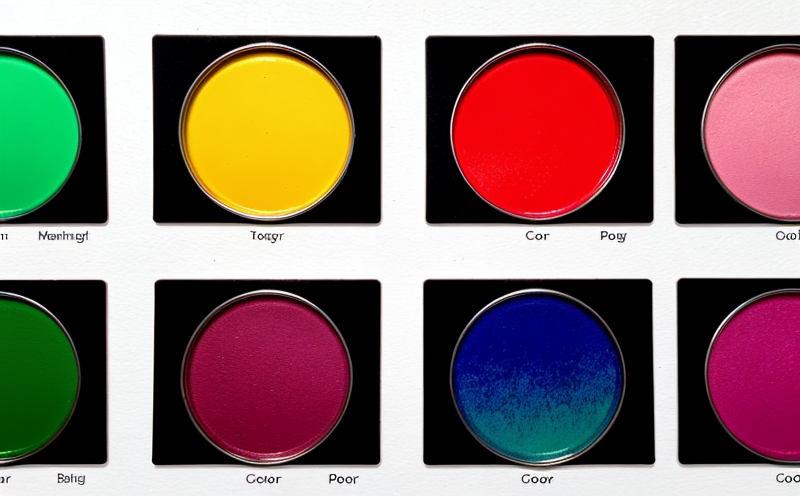ISO 23603 Color Quality Scale Spectrum Testing of Lighting Devices
The ISO 23603 standard is designed to measure and quantify the color quality of lighting devices using a metric called the Color Quality Scale (CQS). This test provides an in-depth analysis of how well a light source renders colors, offering insights beyond basic luminance. For quality managers, compliance officers, R&D engineers, and procurement professionals, this service ensures that lighting products meet stringent international standards.
The ISO 23603 standard is particularly important for evaluating the color rendering index (CRI) of a light source, which has limitations in assessing certain colors under specific conditions. By using spectral data, ISO 23603 offers a more comprehensive evaluation of how lighting devices affect the perceived quality of colors.
The testing process involves several steps, including the preparation of the specimen and the use of specialized instrumentation to gather accurate spectral data. This is critical for ensuring that the lighting device under test meets all specified criteria. The results are then analyzed using complex algorithms which provide a CQS value, offering a more detailed picture than traditional color rendering indices.
The service typically involves the following steps:
- Preparation of the specimen for testing
- Use of spectrophotometric instruments to gather spectral data
- Analyzing the data using ISO 23603 algorithms
- Generating a report detailing the findings and compliance status
Understanding the CQS value is crucial for manufacturers, as it helps them optimize their products for better color rendering. This service not only aids in meeting regulatory requirements but also enhances consumer satisfaction by delivering lighting that accurately renders colors.
The importance of ISO 23603 cannot be overstated, especially in sectors such as architecture, interior design, and retail where accurate color representation is paramount. Lighting plays a significant role in creating the ambiance and visual appeal of spaces, making it essential to ensure that light sources meet high standards for color quality.
The standard's focus on spectral data offers a more nuanced approach to lighting evaluation, which is particularly beneficial for innovation-driven industries like automotive, where the correct color representation can significantly influence brand perception. In summary, ISO 23603 Spectrum Testing ensures that lighting devices deliver accurate and pleasing colors, thereby enhancing user experience across various applications.
Industry Applications
The application of ISO 23603 Spectrum Testing extends to multiple sectors where color accuracy is critical. Here are some key industry areas:
- Agriculture: Ensuring that the light spectrum supports plant growth and enhances visual assessment in greenhouses.
- Automotive: Improving the appearance of vehicles by ensuring accurate color representation under various lighting conditions.
- Retail: Enhancing product display, improving customer experience, and increasing sales through better color rendering.
- Healthcare: Providing accurate medical diagnostics and enhancing patient comfort in environments like hospitals and clinics.
| Sector | Benefit of ISO 23603 Spectrum Testing |
|---|---|
| Agriculture | Supports plant growth, enhances visual assessment in greenhouses |
| Automotive | Improves the appearance of vehicles by ensuring accurate color representation under various lighting conditions. |
| Retail | Enhances product display, improves customer experience, and increases sales through better color rendering. |
| Healthcare | Provides accurate medical diagnostics and enhances patient comfort in environments like hospitals and clinics. |
The accuracy of light sources is crucial for these sectors as it directly impacts the quality of products, services, and overall experience. Ensuring that lighting devices meet the stringent requirements set by ISO 23603 Spectrum Testing can lead to significant improvements in these areas.
Environmental and Sustainability Contributions
The use of ISO 23603 Spectrum Testing contributes significantly to environmental sustainability. By ensuring that lighting devices render colors accurately, this service helps manufacturers design products that are not only visually appealing but also energy-efficient. Accurate color rendering can lead to better material selection, which in turn reduces waste and resource consumption.
Moreover, the standard's emphasis on spectral data allows for more precise control over light sources, leading to reduced energy usage and lower carbon footprints. This is particularly beneficial in large-scale applications like urban lighting or industrial settings where even small improvements can have a substantial impact.
The service also supports sustainability goals by helping manufacturers comply with environmental regulations. By adhering to international standards such as ISO 23603, companies demonstrate their commitment to sustainable practices and can differentiate themselves in the market. This not only enhances brand reputation but also opens up opportunities for eco-friendly product lines.
In conclusion, ISO 23603 Spectrum Testing is a vital tool in promoting environmental sustainability by ensuring that lighting devices are both energy-efficient and visually accurate.
Use Cases and Application Examples
The use of ISO 23603 Spectrum Testing covers various real-world scenarios, including:
- Product Development: Manufacturers can use this service to ensure that their lighting products meet the latest standards and consumer expectations.
- Quality Control: Regular testing helps in maintaining consistent quality across production batches.
- New Product Launches: This ensures that new lighting products are ready for market launch, meeting all regulatory requirements and customer demands.
- Compliance Audits: Compliance officers can use this service to verify that their products comply with international standards.
- R&D Projects: Research and development teams can leverage this testing to innovate and improve existing lighting technologies.
- Supplier Evaluation: Procurement departments can use the results of ISO 23603 Spectrum Testing to evaluate potential suppliers for their quality control measures.
In each of these cases, the service provides valuable insights into the performance of lighting devices, helping stakeholders make informed decisions that enhance product quality and customer satisfaction.





